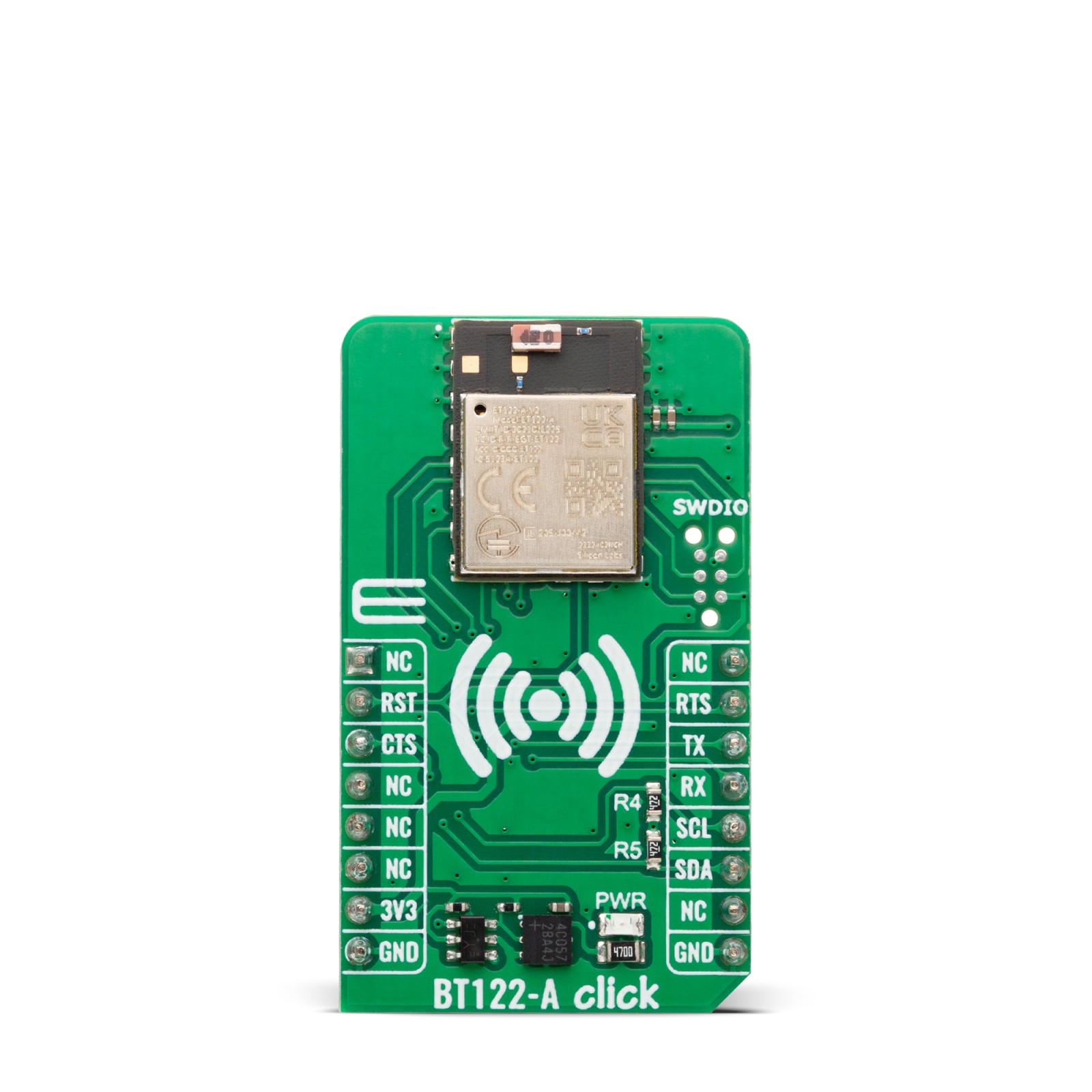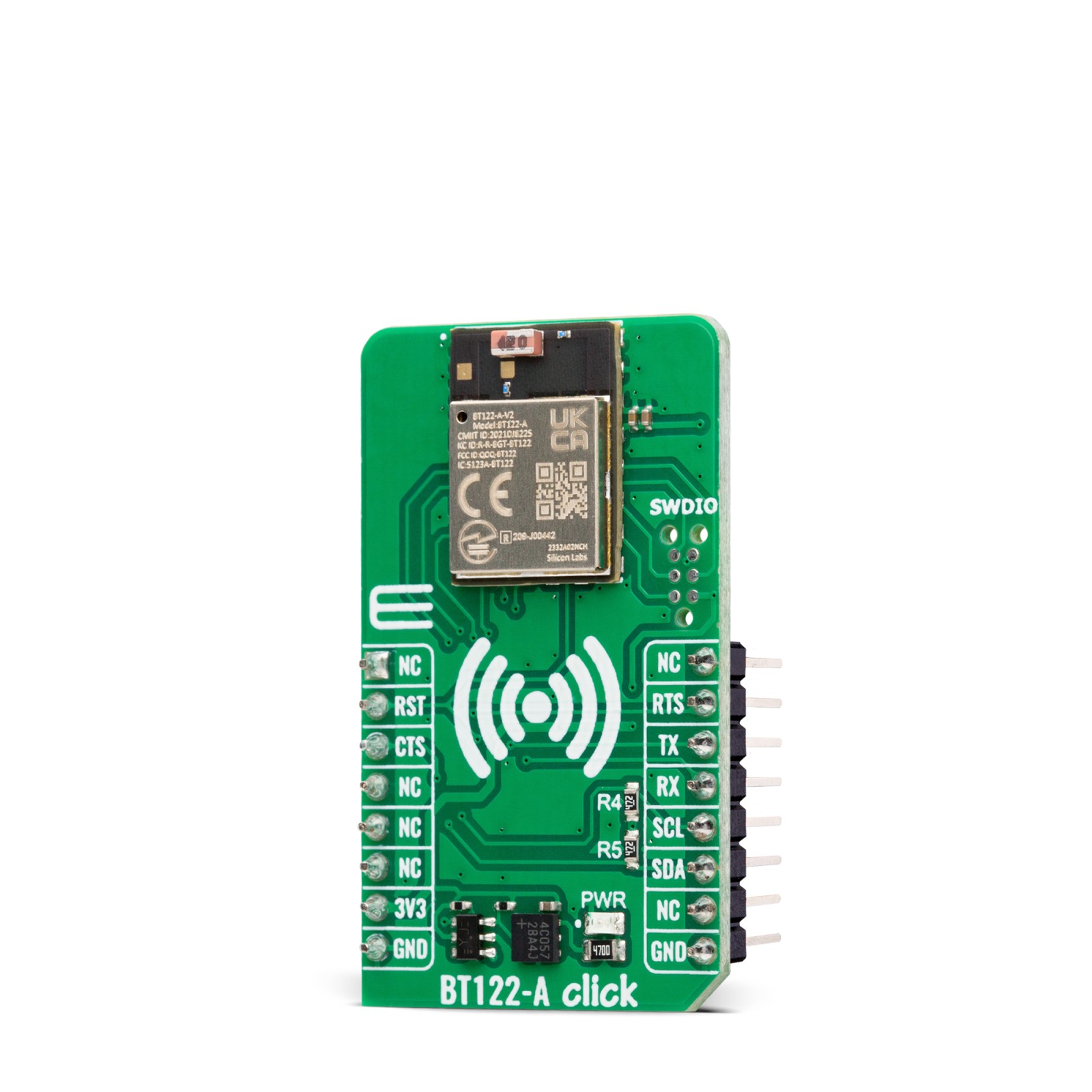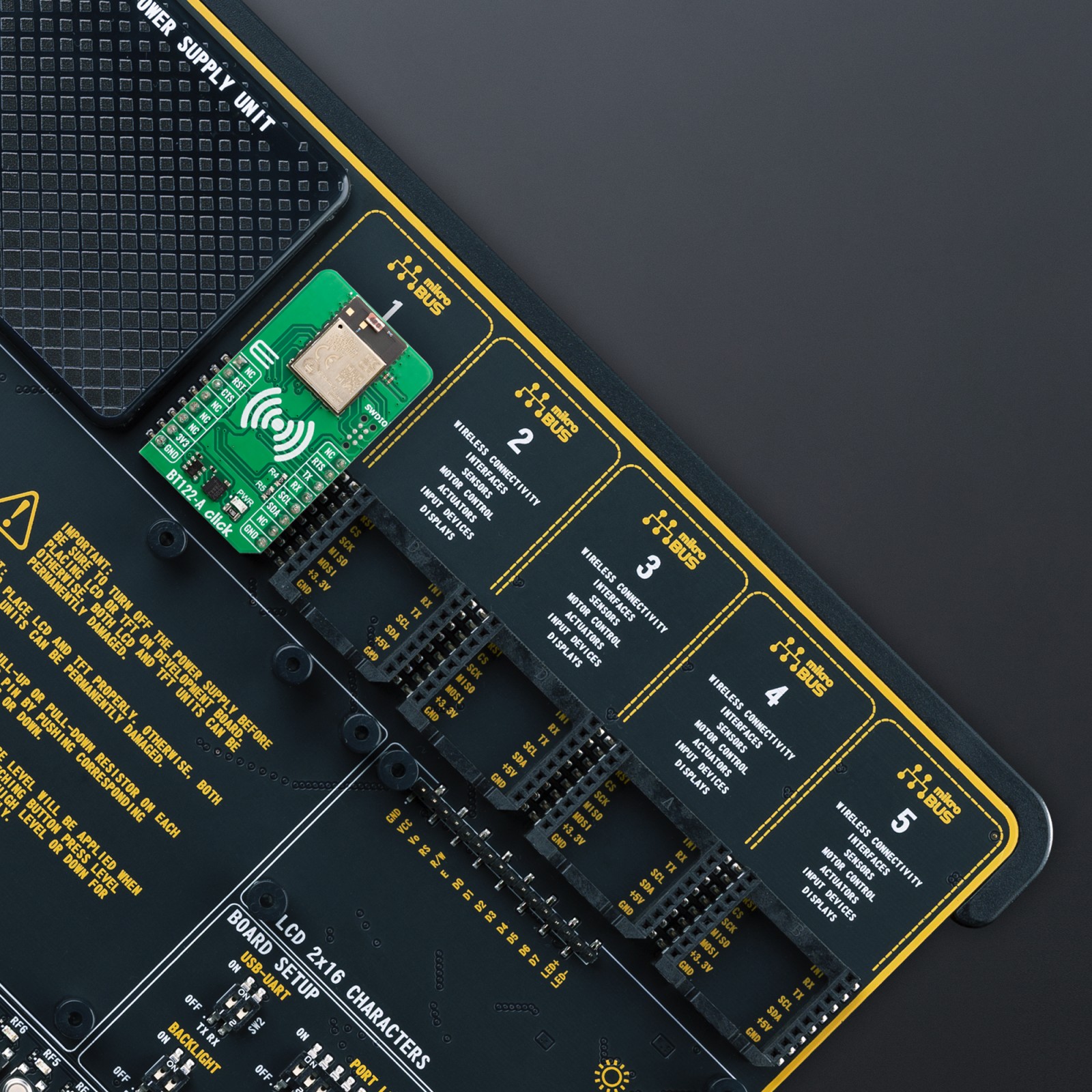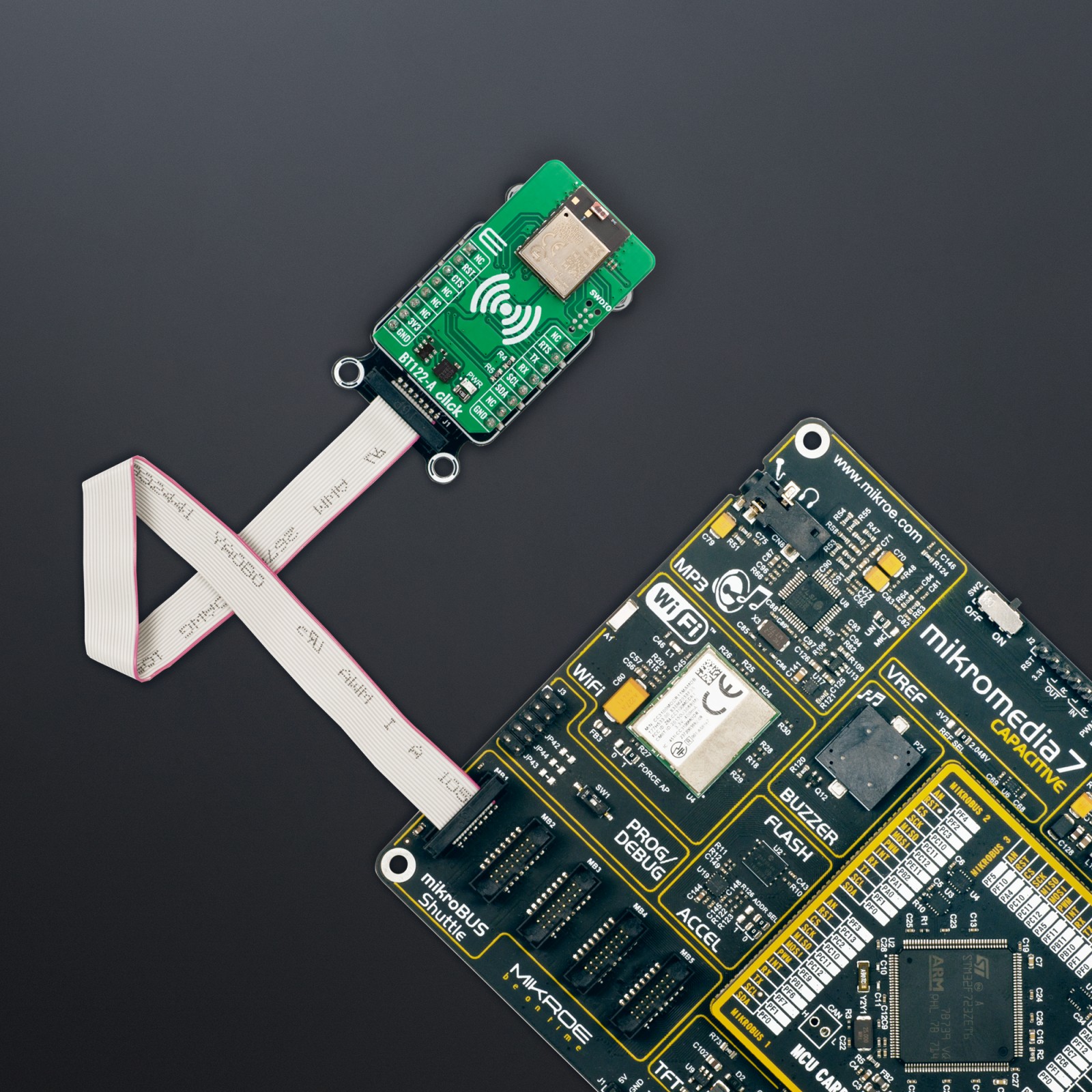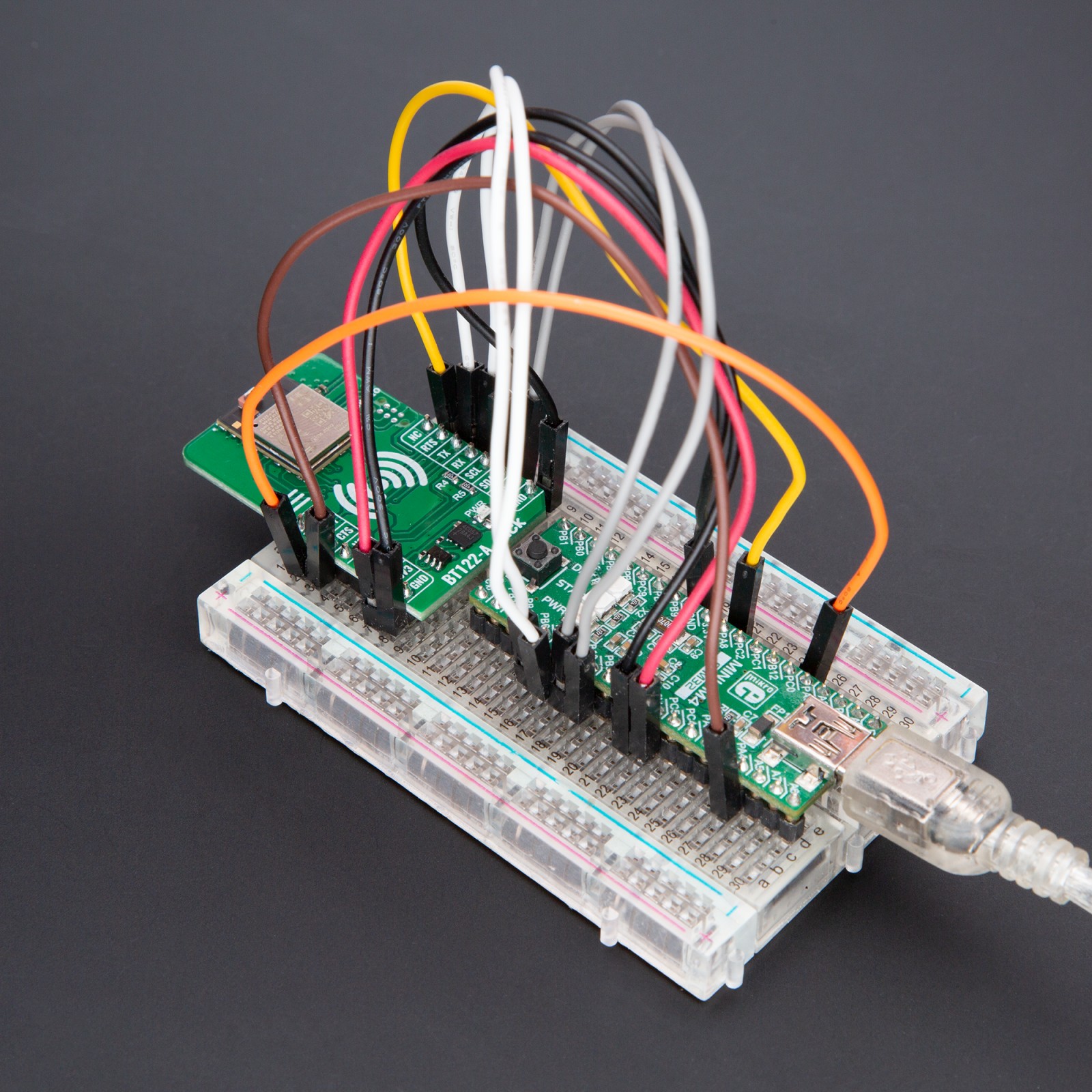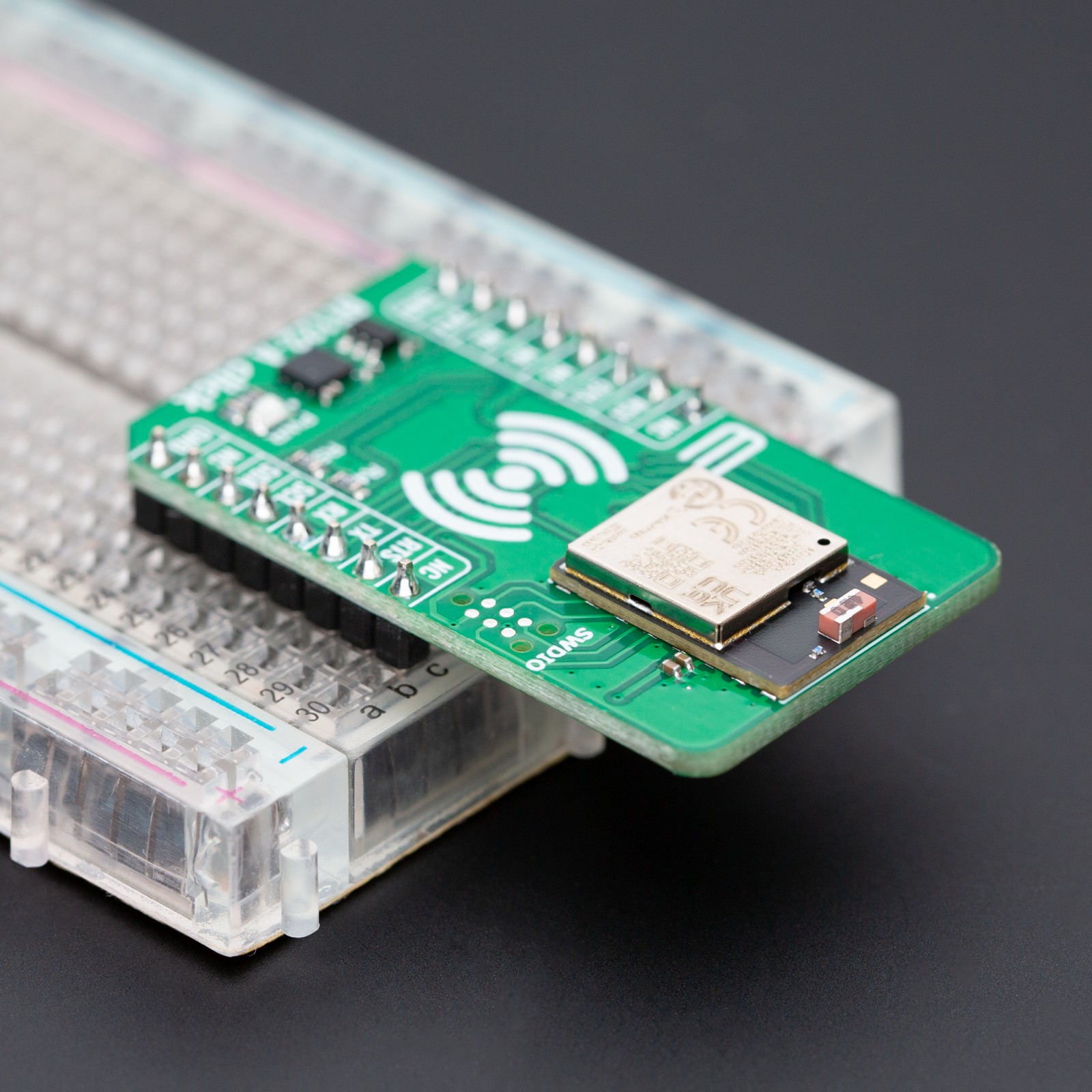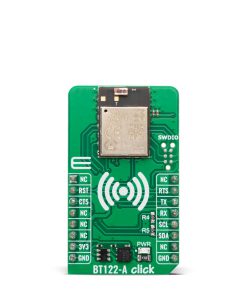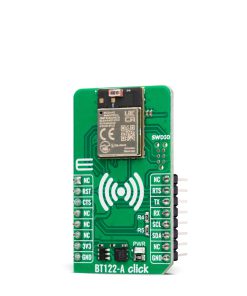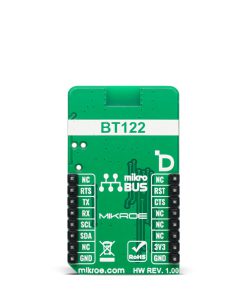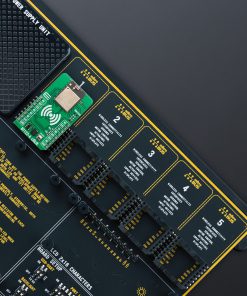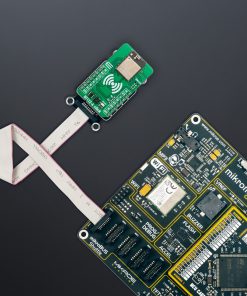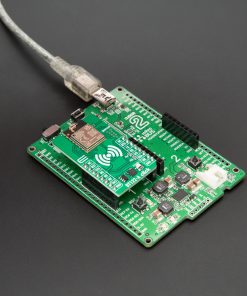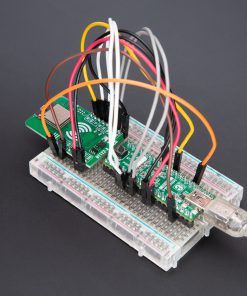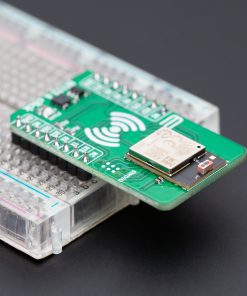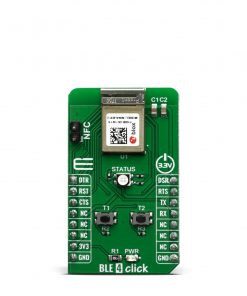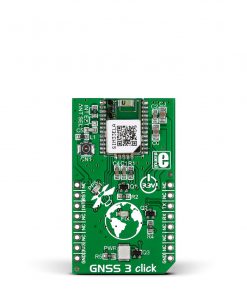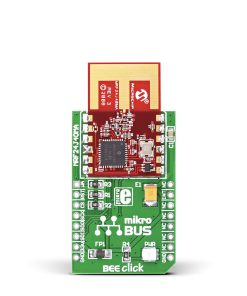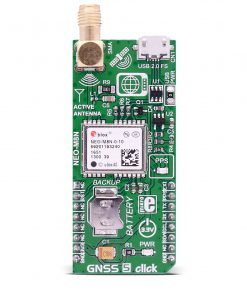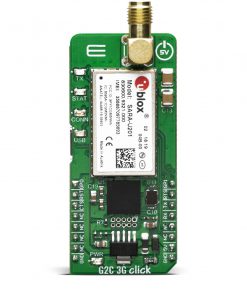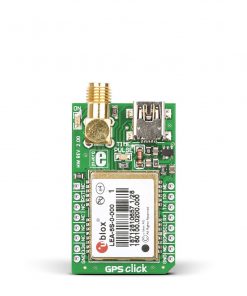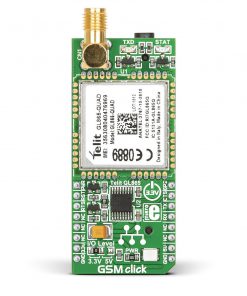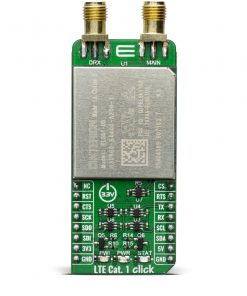BT122-A Click
R1,250.00 ex. VAT
BT122-A Click is a compact add-on board designed for Bluetooth connectivity in low-energy and Classic communication applications. This board features the BT122-A, a dual-mode Bluetooth BR/EDR and BLE v4.2 module from Silicon Labs, with robust performance and flexibility. The BT122-A integrates a high-power Bluetooth radio with +11dBm transmit power and -95dBm receive sensitivity, a built-in antenna, and a low-power 32-bit ARM Cortex-M4 MCU for advanced processing capabilities. It communicates with the host MCU via UART and supports standalone operation with embedded applications using BGScript™. Ideal for cable replacement, health and fitness monitoring, industrial automation, and smart home systems, BT122-A Click ensures reliable Bluetooth connectivity across diverse use cases.
BT122-A Click is fully compatible with the mikroBUS™ socket and can be used on any host system supporting the mikroBUS™ standard. It comes with the mikroSDK open-source libraries, offering unparalleled flexibility for evaluation and customization. What sets this Click board™ apart is the groundbreaking ClickID feature, enabling your host system to seamlessly and automatically detect and identify this add-on board.
Stock: Lead-time applicable.
| 5+ | R1,187.50 |
| 10+ | R1,125.00 |
| 15+ | R1,062.50 |
| 20+ | R1,022.50 |

